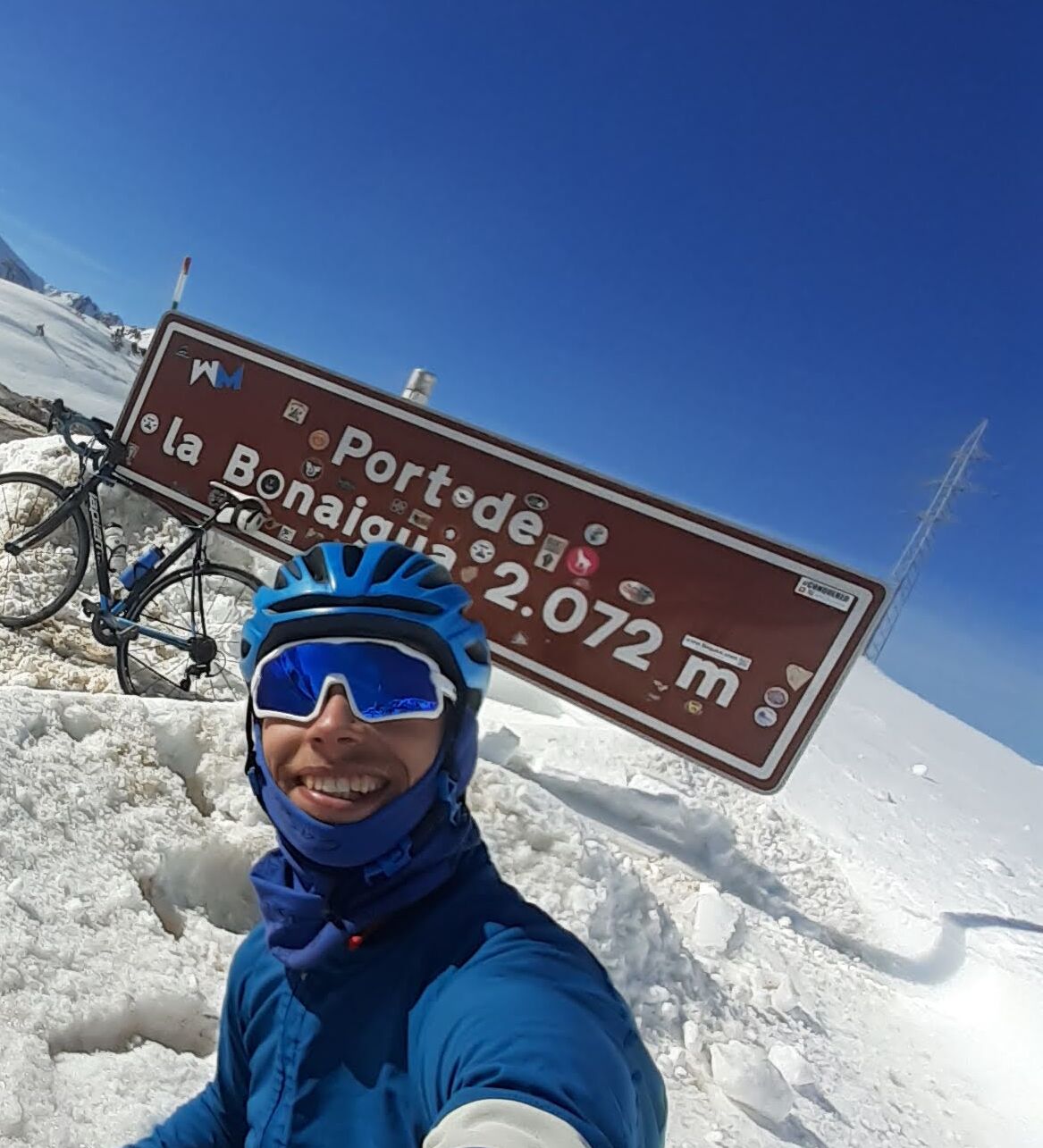If you have 10 riders with the same numbers, one will succeed and nine will fail - why cycling success is more than a big VO2 max
Kristian Blummenfelt had his eyes on the yellow jersey before thinking twice. What stopped the triathlon star from winning the worlds biggest bike race?
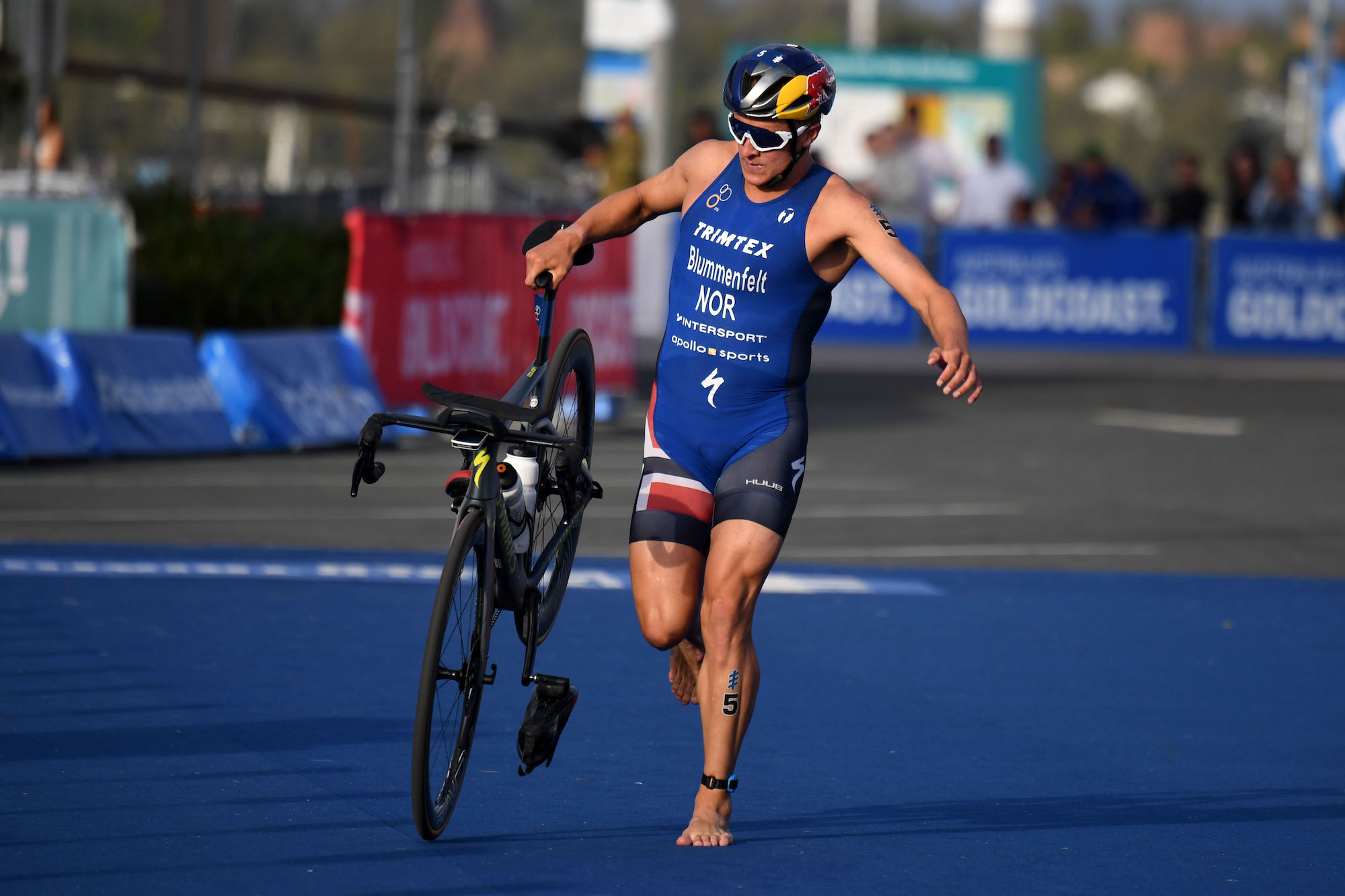
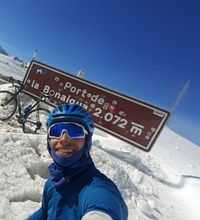
You’d be a brave cycling fan to bet on anyone other than Tadej Pogačar, Jonas Vingegaard or Remco Evenepoel to win any of the five remaining Tours de France of the 2020s. But last summer, just as Pogačar was celebrating becoming the first man in 26 years to claim the Giro-Tour double, a Norwegian triathlete declared his intention to fight for the yellow jersey in 2028.
The man in question was no newbie to cycling: Kristian Blummenfelt is an Olympic and world triathlon and Ironman champion who holds several world records and has been dubbed the ‘fittest human on the planet’. But he’s never competed in a standalone bike race, and come the summer of 2028, he’ll be 34-and-a-half years old – only one male rider, Belgian Firmin Lambot, has won the Tour at an older age, 36 and four months, and that was in 1922.
What led Blummenfelt to be so confident and tempted World Tour team Jayco-Alula to offer him a contract – were his exceptional data points: his VO2 max is said to be 103ml/kg/min, which even accounting for contested discrepancies in Norwegian testing, places him above any known readings from current or previous cyclists.
His coach, Olav Aleksander Bu, told Norwegian media that switching to cycling would not be a retirement plan for Blummenfelt. Instead, there was one goal: “It must be a yellow jersey in the Tour de France; it’s as simple as that”. A few months later, Blummenfelt pressed pause on his cycling ambitions and withdrew from the Jayco-Alula deal by mutual agreement, perhaps for good, stating his intention to claim more Ironman titles and win a second triathlon gold medal at the 2028 Olympics, having been disappointed with his 12th-place showing in Paris 2024. Even so, his brief public flirtation with the Tour de France stirred a debate within cycling: to what degree can raw data indicate future glory?
Blummenfelt wouldn’t have been the first athlete to switch to cycling after competing at a high level in another sport. Slovenian former ski jumper Primož Roglič, a five-time Grand Tour winner, is the most famous example in the 21st century. Others who have made the switch successfully include Canadian Michael Woods, who ran a sub-four-minute mile before becoming a pro cyclist, and Rebecca Romero, a silver medallist in rowing at the 2004 Olympics for Great Britain who then won gold in the individual pursuit in track cycling four years later.
But just possessing an impressive FTP or high VO2 max isn’t enough, as EF Education-EasyPost’s sports director Tom Southam points out: “If you have 10 riders with the same numbers, one will succeed and nine will fail. Whether or not someone makes it in racing depends on so many factors”
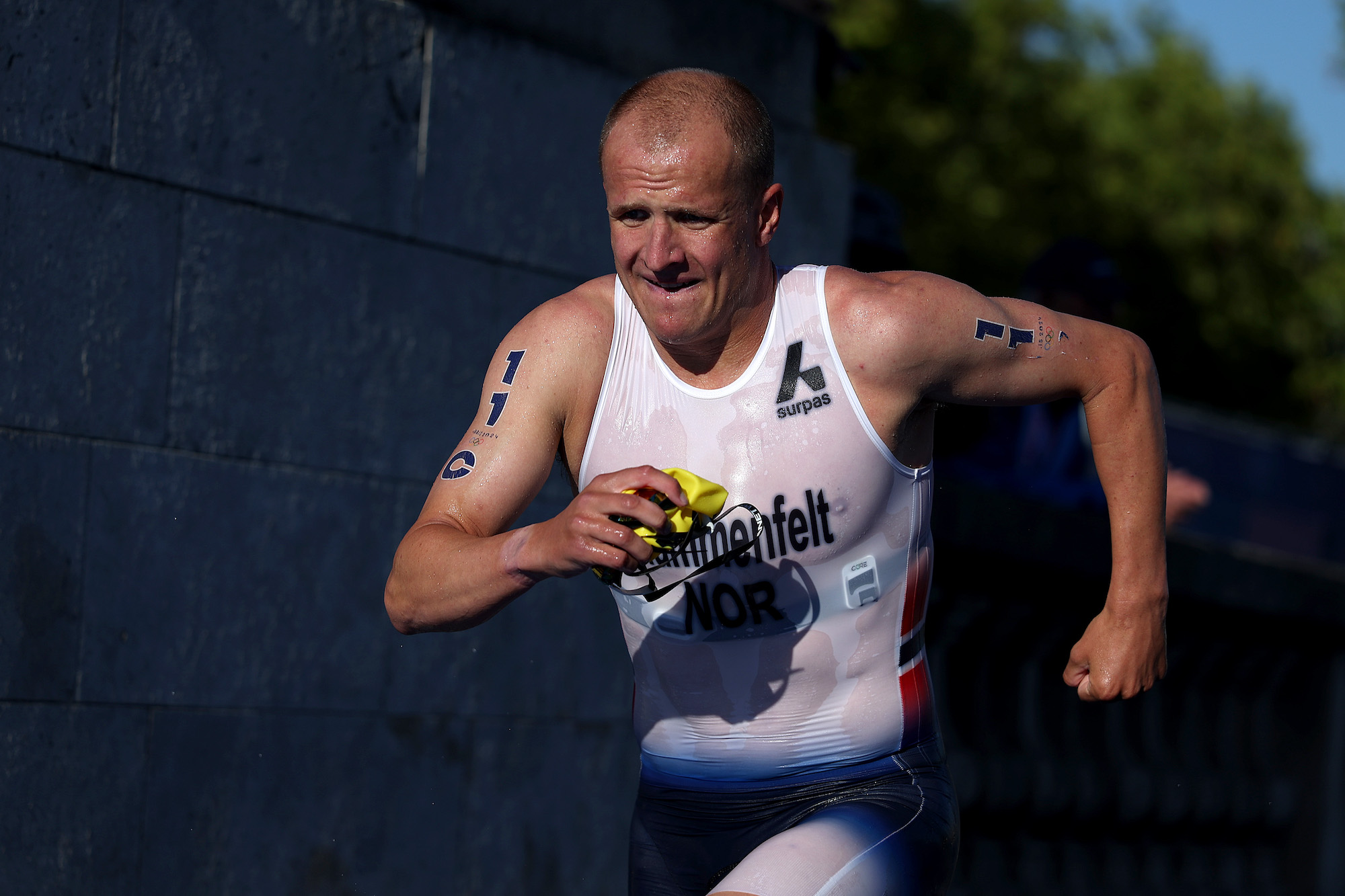
Triathlete Blummenfelt pressed pause on his goal of winning the Tour.
One of those decisive factors – and one that athletes have no control over – is their genetics. “If an athlete doesn’t have the right physiology, they’re never going to be a good endurance athlete,” says James Hopker, a professor of sport and exercise science at the University of Kent.
The latest race content, interviews, features, reviews and expert buying guides, direct to your inbox!
“How much we’re driven by genetics is a debate in training literature, but most studies agree that 60% of [athletic success] is genetically determined. In terms of elite athletes, genetics gives them the basic tools, but then the individual needs to do an awful lot of training and take the opportunities to make the best use of that physiology”.
VO2 max refers to the body’s maximum uptake of oxygen. Simply put, the more oxygen the heart, lungs and blood can supply to the working muscles, the faster a cyclist can ride. This is why VO2 max is often held up as the holy grail, the true barometer of a rider’s capabilities. But an athlete can only operate at VO2 max intensity for around six to 15 minutes. If it were really the decisive factor, we’d practically hand Blummenfelt the 2028 yellow jersey right now. In reality, VO2 max is just one piece of the performance jigsaw, one marker among many.
“VO2 max indicates a ceiling,” Hopker says. “You certainly need a high VO2 max to compete as an elite endurance athlete, but it’s not the be-all and end-all”. Robert de Groot, Visma-Lease a Bike’s head of development, has recruited athletes from speed skating and a variety of ski disciplines. He takes a similar view on VO2 max. “We’ll never again have a Grand Tour winner with a VO2 max of 70 [ml/kg/min],” he says. Bear in mind that, in the general population, a VO2 max of over 65ml/kg/ml is considered excellent. “A Grand Tour winner these days would be expected to have a VO2 max of between 84 and 88, and for sprinters and Classics riders, at least 70”.
Jason Osborne won a silver medal in rowing for Germany at the delayed Tokyo Olympics in 2021, and twice won the UCI Cycling Esports World Championships, in 2020 and 2024. He rode in the World Tour for Alpecin-Deceuninck in 2023 and 2024, finishing second on GC at the Tour of Austria in 2023. “As a cyclist, my VO2 max is my biggest weapon,” he says. “When I was tested in the lab in Cologne [in his rowing days], mine was 95-96”. No professional cyclist has ever publicly revealed a VO2 max in excess of 96. “From my rowing days, I know that my high VO2 max compensates for having a lower lactate threshold than some of my competitors. But a high VO2 max is definitely not enough in cycling – you need to have good efficiency as well”

Jason Osborne came from rowing to win an E world title on a bike
All the experts agree. “What’s more important is an athlete’s lactate threshold, their FTP in relation to VO2 max,” Hopker says. “The closer that is to the VO2 max, and the longer they can operate in those high percentages, the better the athlete can perform”. Lactate threshold is the point at which the build-up of lactate outpaces its removal – elite cyclists can comfortably ride at between 85-95% of their VO2 max for prolonged periods. VO2 max is trainable but only to a certain degree.
“Once an athlete reaches their VO2 max genetic ceiling, that’s fairly fixed – they can’t get beyond it,” Hopker explains. “So then it’s all about how much power they can produce at sub-VO2 max intensity for a longer period of time, and this is determined by their threshold points. And the good thing is, lactate thresholds are trainable”.
It is this trainability – inducing adaptations to training loads and intensities – that is key. “Even people with the right physiology and promise don’t always make it,” Hopker says. “How an athlete responds to training is ultimately what will see them make improvements in their physiological markers. You can have the right physiology to start off with, but then you need the combination of the right training, environment and opportunities – and a coach who responds and adapts the training according to the response. If you have that, you have a chance”.
Imagine, then, that a cyclist’s lactate threshold power is close to their impressively high VO2 max power, and they can ride at near their absolute max for a full half an hour in the high mountains. They’ve got the foundations for success – so what do they need to do next? “Scientific research has shown more and more in recent years the importance of durability, the ability to sustain exercise for a prolonged period of time and then perform at even greater levels – after a significant amount of accumulated work,” Hopker says. This durability – or fatigue resistance – means being able to mount a race-winning attack six hours into a race, or in the final throes of a three-week Grand Tour.
Osborne remembers his struggle with durability upon first committing to cycling. “In my first races, I was really fatigued, but my team-mates were saying how my body would adapt. Just doing all those races gives you durability, but it takes time,” he says. “Lots of riders have high five-, 10- and 20-minute power numbers, but when it comes to road racing, you need to be able to do that having used thousands of kilojoules of energy”.

Michael Woods switched from running to cycling
For his part, Blummenfelt is convinced he would be able to adapt to the rigours of Grand Tour racing. “It’s different to ride in a group with triathletes than to ride in the World Tour,” he told the website Tri247, “but I think my engine is my strength, as is being able to tolerate a high volume over not just days but weeks”.
Hopker next highlights body mass as a crucial factor – the one most likely to be Blummenfelt’s undoing. “The most important thing in elite cycling is body weight and morphology,” says the scientist. “If you think about going uphill, any additional load is going to work against you”. Blummenfelt is a stocky athlete who weighs 79kg – 20kg more than Vingegaard. “He may have a shot as a sprinter, but as a GC rider he would struggle,” Hopker predicts. “Being a GC rider is all about how much power you can produce for a given weight, so he’d have to produce significantly more”.
Racecraft demands
Raw data can point towards success, but so much else goes into the mix that formulates a Grand-Tour-winning bike rider: peloton skills, bunch experience, avoiding crashes, not carrying around extra unnecessary kilos, and patience. Osborne’s experience bears this out. “I have no issue with putting power down,” he says. “But initially I struggled with the tactical things and moving around in the peloton. It took me some time”. Last September, he left Alpecin to focus on eRacing and gravel riding – he had certainly not shamed himself in the World Tour, but nor had he been able to regularly better the more seasoned pros.
“Good numbers are very important, but they’re just part of the puzzle,” Visma’s De Groot reiterates. “They’re the fundamentals of building the foundations, but then the real work starts. How do you use those numbers in a race? How do you navigate narrow roads, nervous opponents and stress? A rider with no peloton skills is of no use, no matter how great their numbers”
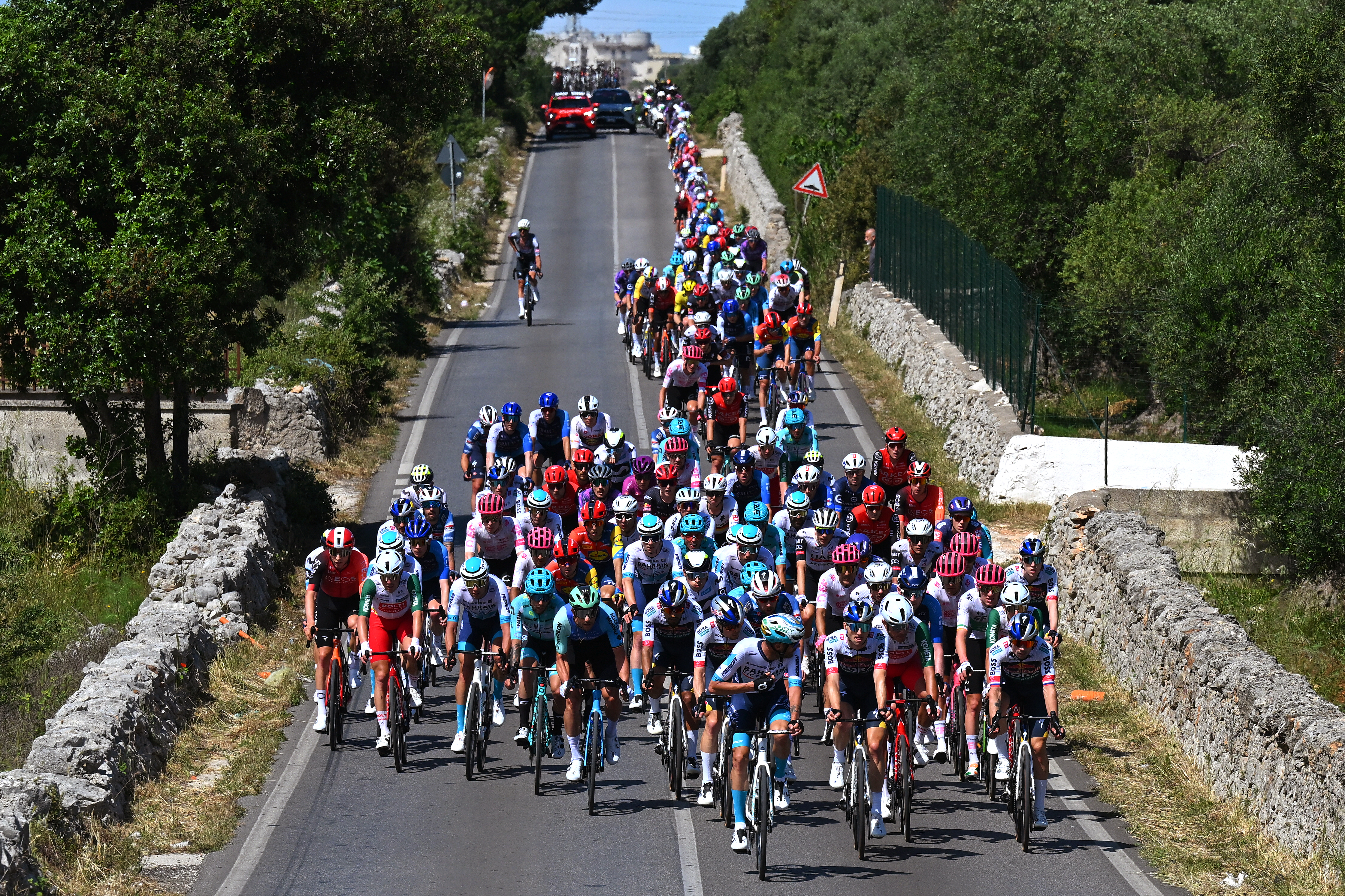
Riding efficiently in a fast moving peloton is a skill not every athlete has
How teams spot talent
When cycling teams assess a rider with a view to potentially signing them, there are a few basic pieces of data they analyse first. “Watts per kilo, absolute power and body weight is what we’ll start with,” says Robbert de Groot, Visma-Lease a Bike’s head of development.
“Then we’ll look at anaerobic and aerobic figures to find out if this person is able to sprint, or if they’re more suited to being an endurance athlete without any specific acceleration or sprinting capacities. We’ll never give them just a one-minute or 20-minute effort to do – we need to do a bigger profile. Someone might be very light, but on a flat road and in echelons can still produce big power”.
Bike skills are also analysed. “It’s an obvious advantage if they have experience, and even more so in different disciplines, like cyclo-cross, BMX, mountain biking and track. But we can’t say it’s only possible to be a good cyclist if you’ve been on a bike since you were young”. When all the numbers are crunched and merged with other reference points, a decision is made on the athlete’s future and potential.
“There are a lot of factors involved in becoming a good cyclist, but what is clear is that above all you need to be a quality athlete in many different facets”. You need good numbers but you also need to be tactically astute and know how to deal with the intricacies of a peloton.
A freelance sports journalist and podcaster, you'll mostly find Chris's byline attached to news scoops, profile interviews and long reads across a variety of different publications. He has been writing regularly for Cycling Weekly since 2013. In 2024 he released a seven-part podcast documentary, Ghost in the Machine, about motor doping in cycling.
Previously a ski, hiking and cycling guide in the Canadian Rockies and Spanish Pyrenees, he almost certainly holds the record for the most number of interviews conducted from snowy mountains. He lives in Valencia, Spain.
You must confirm your public display name before commenting
Please logout and then login again, you will then be prompted to enter your display name.
